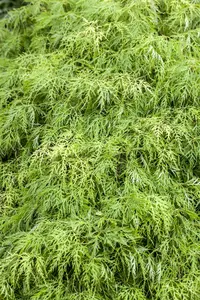Prunus avium 'Annabella' - 1/2 STDS BR
Prunus avium 'Annabella' - 1/2 STDS BR
Bulletpoints
* sweet, aromatic flavour
* the flowers are highly favoured by bees, bumblebees and hoverflies
* fragrant flowers
* easy to care for
* heat-loving, sensitive to late frost, cannot be planted over, stem protection recommended
Bark
Smooth, shiny bark.
Spread
Europe to West Asia.
Frost hardiness
The Wild cherry 'Annabella' has good frost hardiness.
Growth
Ovoid.
Water
Water regularly and allow the soil to dry out in the meantime.
Location
Preferred location in a sunny to semi-shady, wind-protected position.
Soil
Prunus avium 'Annabella' prefers nutrient-rich, sufficiently moist soil.
Planting time
Container plants can be planted all year round, except when the soil is frozen and in summer heat (over 30°C).
Care
- Excess water must be able to drain away easily and waterlogging should be avoided at all costs.
- Fruit trees planted in spring must be watered generously throughout the summer. Well-rooted plants only need additional water in extremely dry conditions.
- Frozen shoots should be cut back to the healthy wood as soon as there is no longer any danger of frost.
Fruiting varieties
This plant is not self-fertile and needs support to bear fruit. The following plants are recommended as good pollinators:
- Prunus avium 'Schneiders Späte Knorpel'.
Flower
Prunus avium 'Annabella' forms light red, pink-coloured flowers from April. They exude a pleasant fragrance and grow to around 2 - 3 cm in size.
Fruit
The fruits have a sweet, aromatic flavour. Ripen from July, ready to eat from July.
Use
Ornamental shrub, bee pasture, consumption, jam, baking, juice
Root
Prunus avium 'Annabella' is a heartroot.
- Article number58
-
EAN codePRAANNAB-4Z
- Latin namePrunus avium 'Annabella'
- catalogLandscape shop



